Introduction
- Most NGO’s fund projects that help in environmental sustainability.
- Such projects help in environmental conservation.
- Most of these projects involve the community as a whole which is also the beneficiary.
In the recent past, effects of global warming have been felt throughout the globe. These effects have been the driving force for environmental conservation. The key players and funding organizations are the non-governmental organizations with a few of the large corporations also taking part. When these projects are initiated, they involve the community members who are also the direct beneficiaries of the same projects. This presentation is therefore an exploration of one of the commonly funded projects used to enhance environmental sustainability.
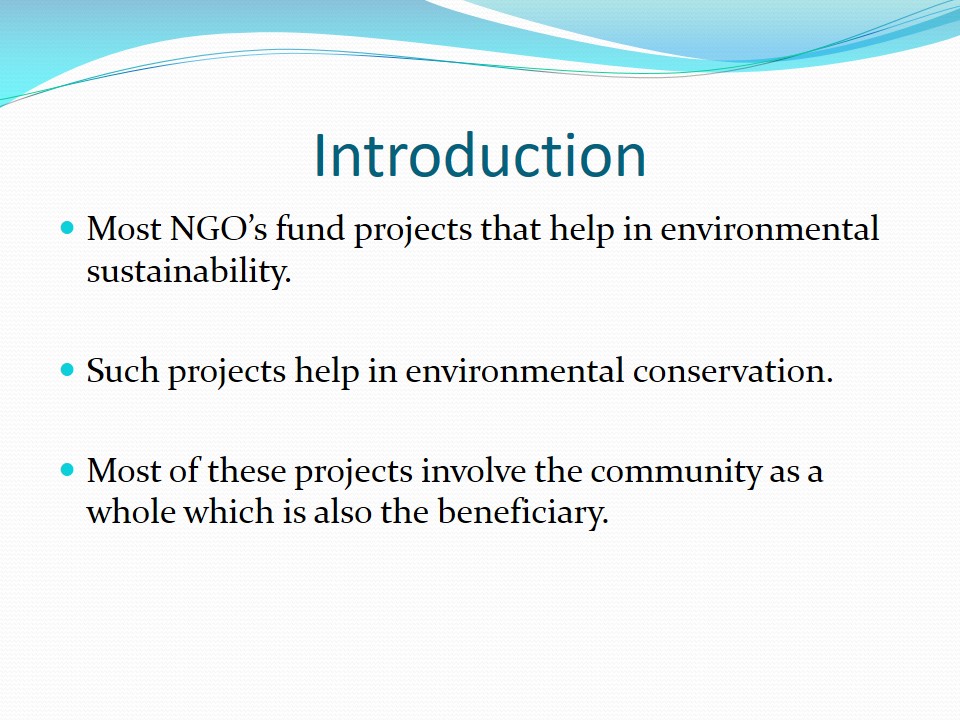
Background of the Project
- Studies show that desertification is evident in most regions of the globe.
- Desertification leads to less rainfall being received, thus low production of agricultural produce which in turn raises the prices of the commodities in the market.
Research done on most parts of the globe has shown that desertification is slowly rising up to become a global issue. This has majorly been contributed by deforestation whereby trees are cut down and the place left bare thus becoming a desert in the long-run (Current et al, 1995, p.1). As a result, minimal volumes of rainfall is experienced in these areas thus low yields from firms. When the supply of agricultural commodities is low, the prices of the commodities in the market in turn appreciate making it difficult for all people to have access to them.
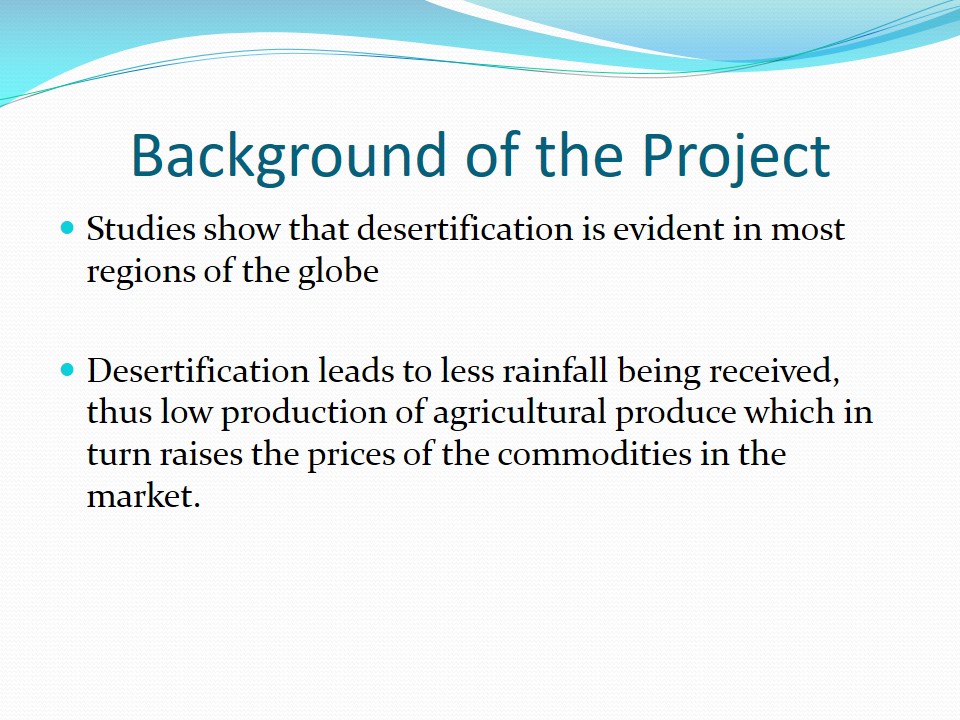
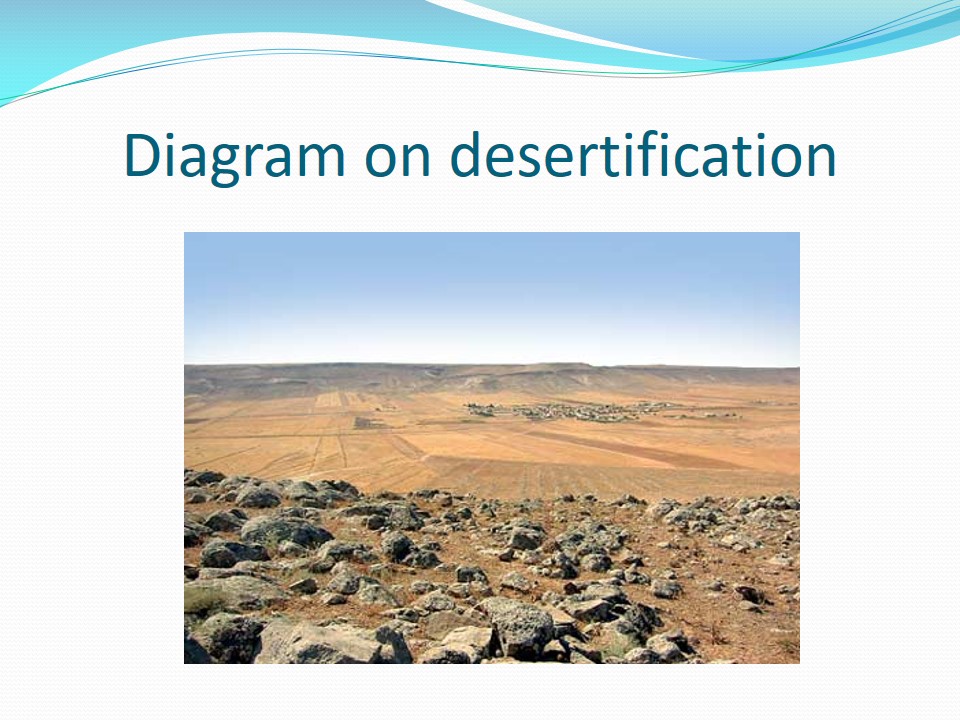
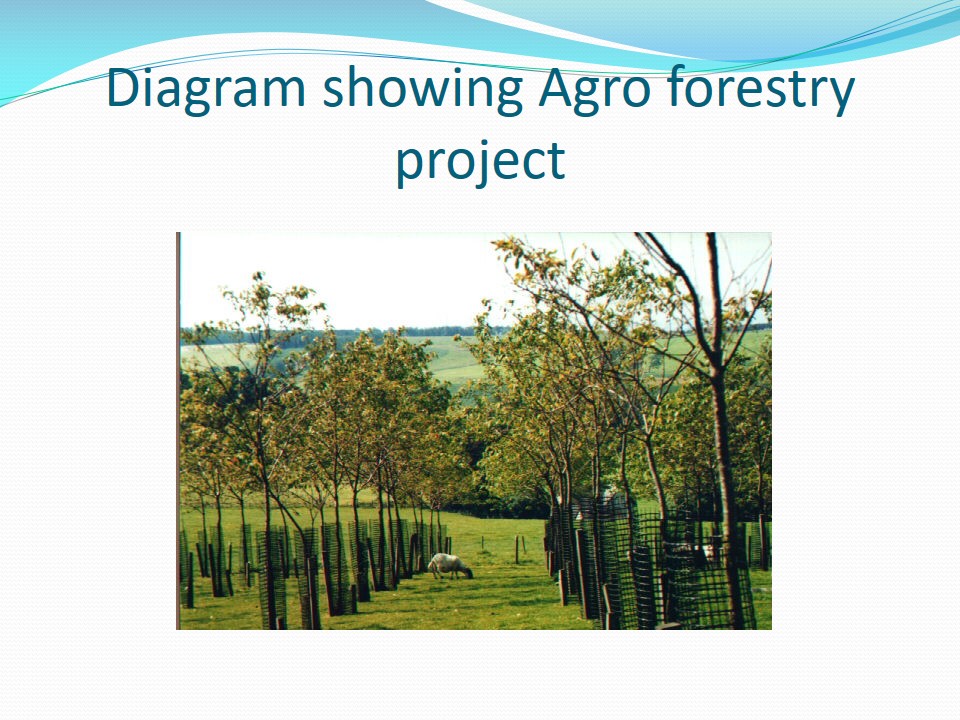
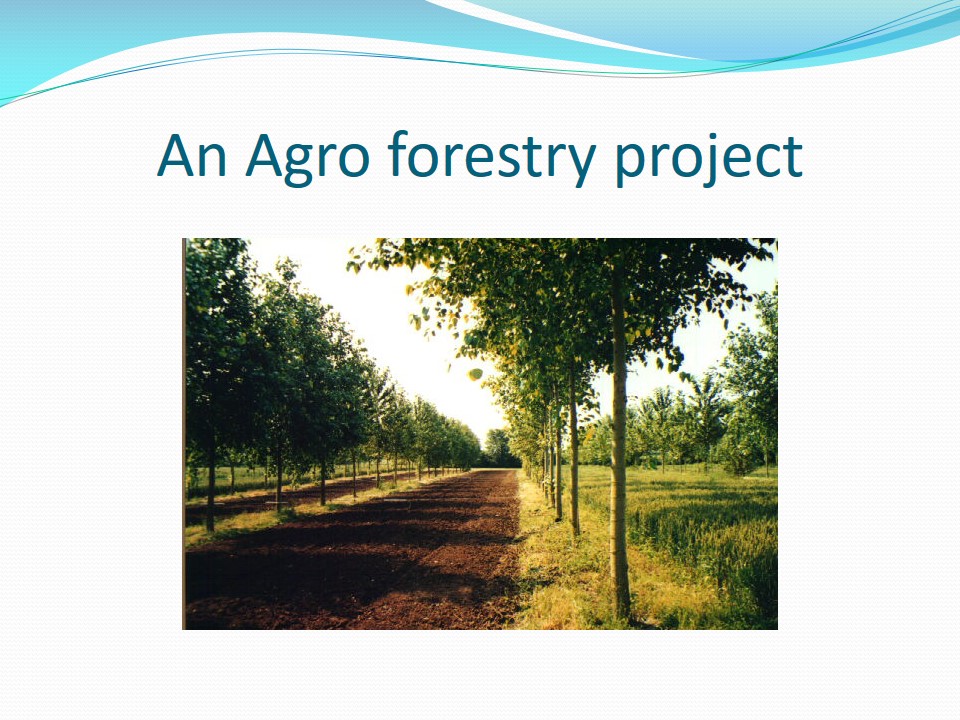
Objectives of the Project
- To create awareness to the community on the effects of deforestation.
- Educate the community on the benefits of agro forestry.
- Initiate education and training centers.
The programme is designed to achieve several objectives, but the main objective will be to create awareness to the community on the disadvantages that come about as a result of deforestation. The community will also be educated on the benefits that come with practicing agro forestry in their farms. Lastly, as part of the project’s legacy, training centers will be established where the community has access to all information they might need regarding agro- forestry.
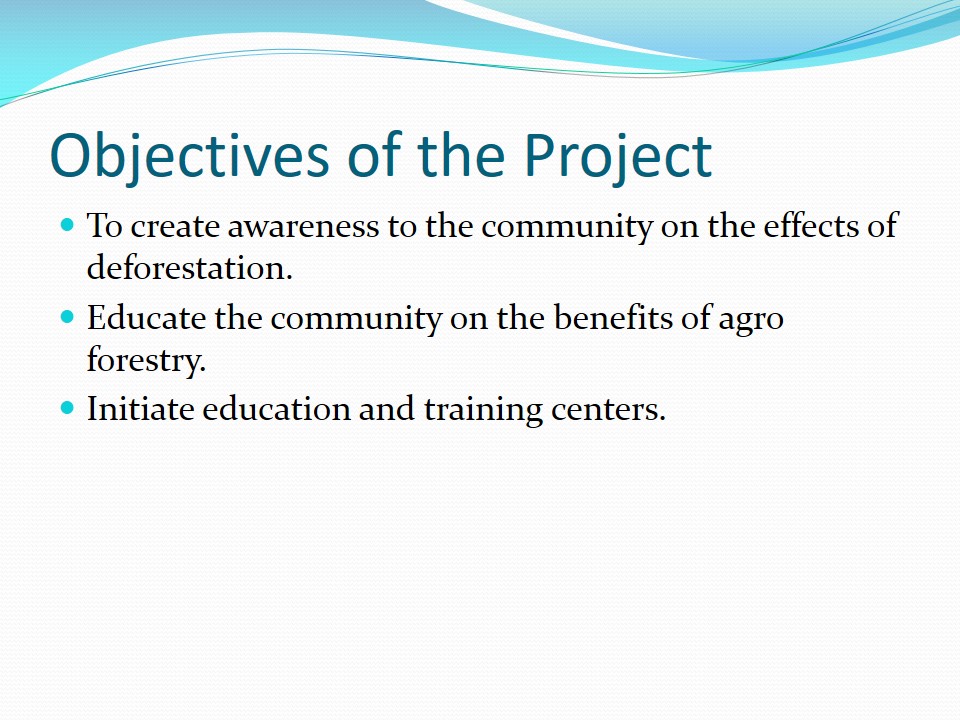
Project Implementation
- The implementation is bound to take place sequentially as follows:
- Formal and Informal training;
- Demonstrations and Trials;
- Community Participation;
- Incorporation of Technical expertise;
- Development of training centers.
Most of the NGO projects are usually long-term taking up to two years depending on the funding and cooperation from the community. In order to effectively implement the project, the project managers should begin with training and enlightening the community on agro forestry. This should be followed by demonstrations and trials whereby tree nurseries are developed from which the community will be getting their tree seedlings. After demonstrations, the community should be involved and now let to practice the project in their actual farms. Technical expertise will be of help when it comes to the actual scene, whereby, the community will be advised on technical matters such as the expected distance from one tree to the next among other matters. Before completion of the project, the managers should ensure that they set up a training center from which the community could seek future assistance.
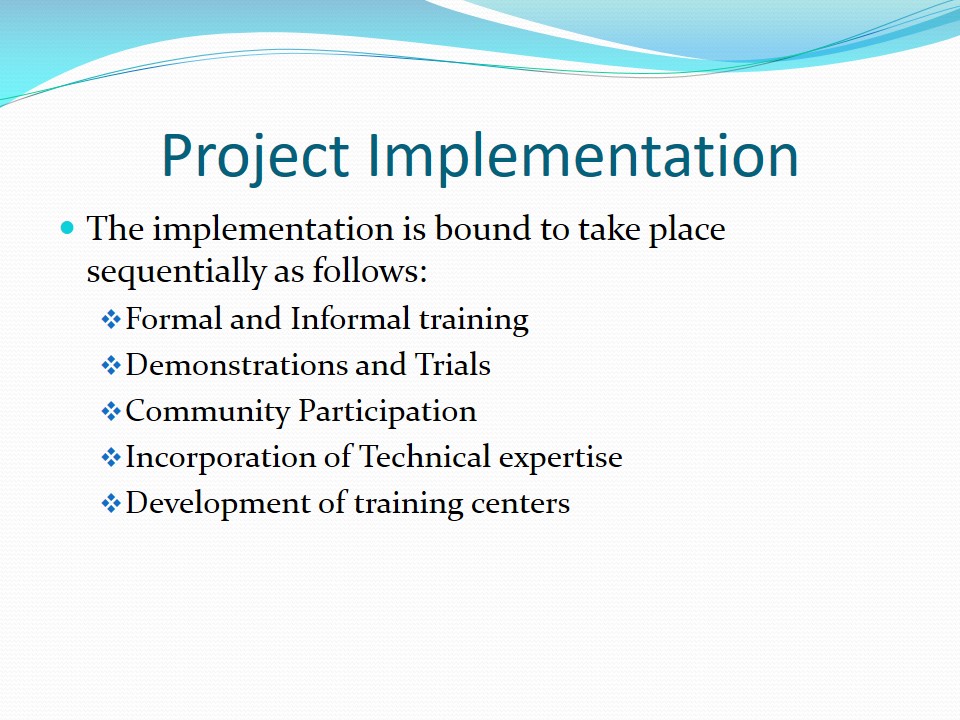
Formal and Informal Training
- This is intended to begin at the grass root level.
- Project mangers are expected to literally educate the community on agro forestry.
- It could be home based, whereby the technicians visit the community people in their farms.
In order to effectively implement the project, the project managers should ensure that training objectives are well attained. This could be by organizing open forums where they educate and train the community on how to go about agro forestry.
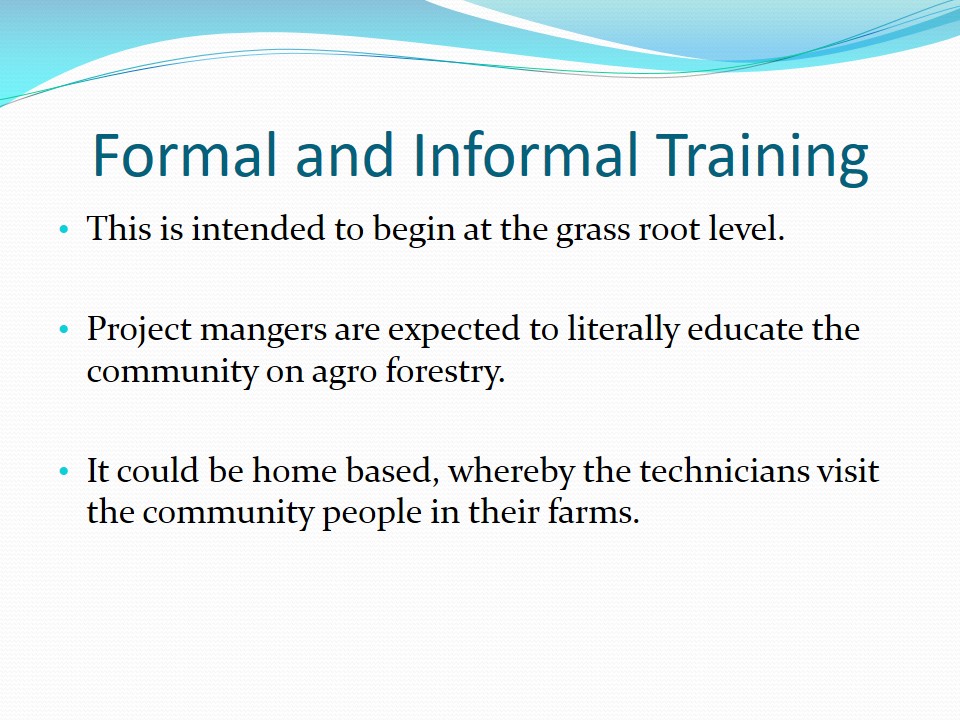
Demonstrations and Trials
- This has more impact than the literal teaching.
- It is carried out in open fields where the field managers perform trials of the project.
- As a result, the community will be in a position to have a clear picture on what is being talked about in agro forestry.
Demonstrations and trials are the practical bit of the project through which the community gets a clear picture of what the organization is talking about in terms of agro forestry. These are done through the enactment of tree nurseries and then having the tree seedlings planted in farms where there are other food crops. In the long-run, the whole field will be a forest-cum- farm thus being very productive.
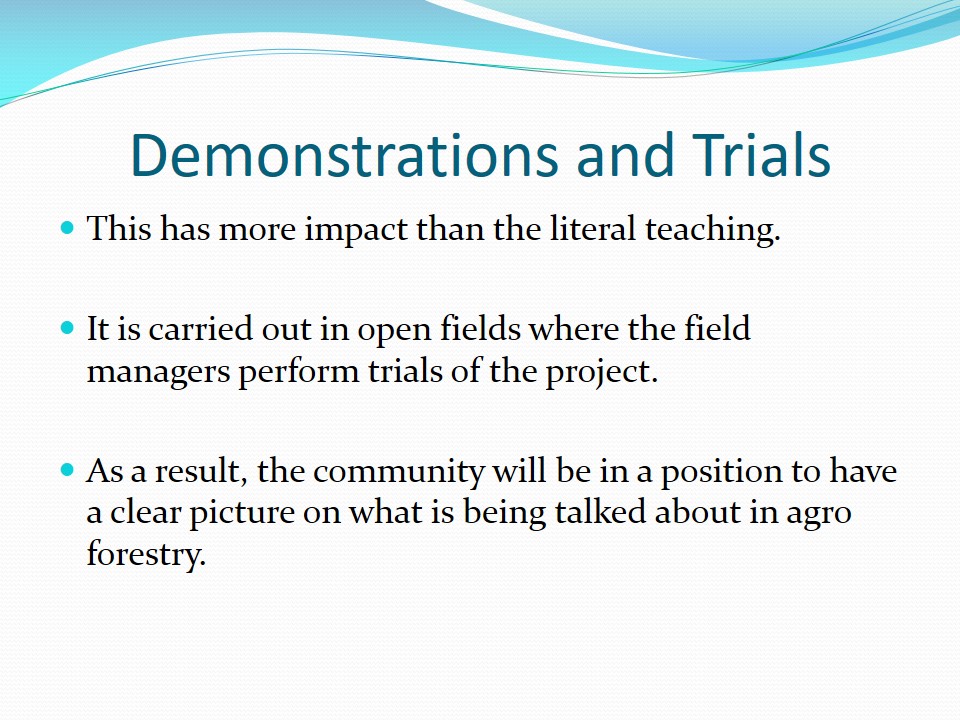

Community Participation
- Incorporating the community in the implementation of the project has many benefits.
- This could be by having the community members participate in the trial fields.
- The project managers will have the following roles;
- Assessment of the local capabilities;
- Project recommendations for field office intervention;
- Recommendation of changes in the NGO in order to increase the advocate for environmental sustainability.
A good way of having the community participate in the project is by letting the members of the community take part in the trial fields in which the project technicians demonstrate. From such, the community will have gained hands-on experience thus being able to effectively implement the agro forestry project in their own fields.
Before implementation of the project, project managers are expected to determine and assess the applicability of the project in the area in question. This is important when it comes to determining the cost and time budget. The managers are also responsible for making any recommendations with regard to the project in the field as well as back in the organization’s offices.
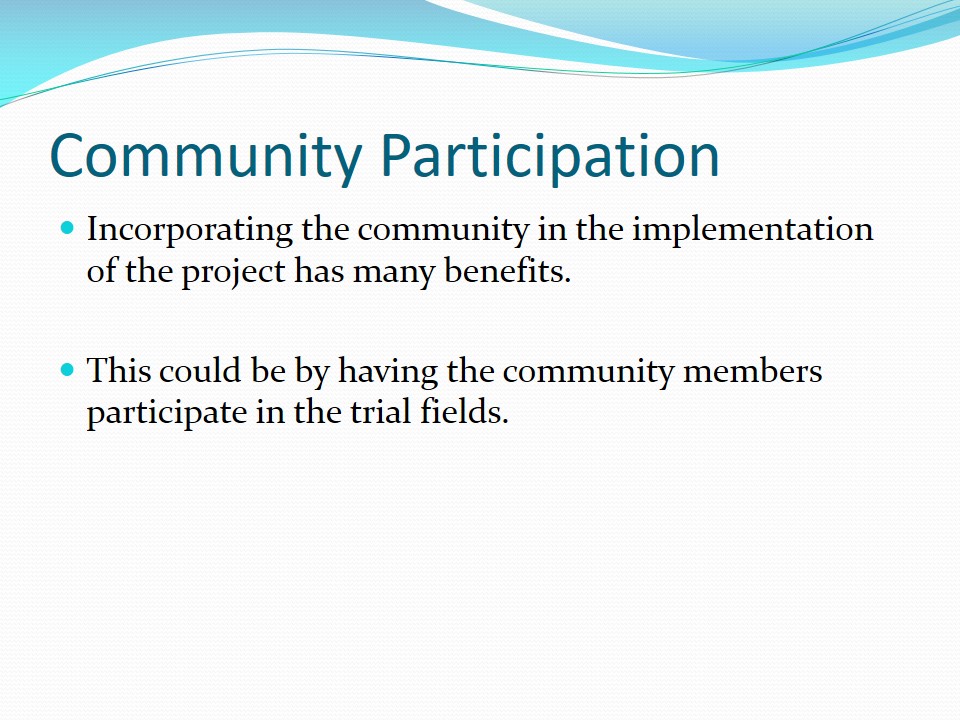
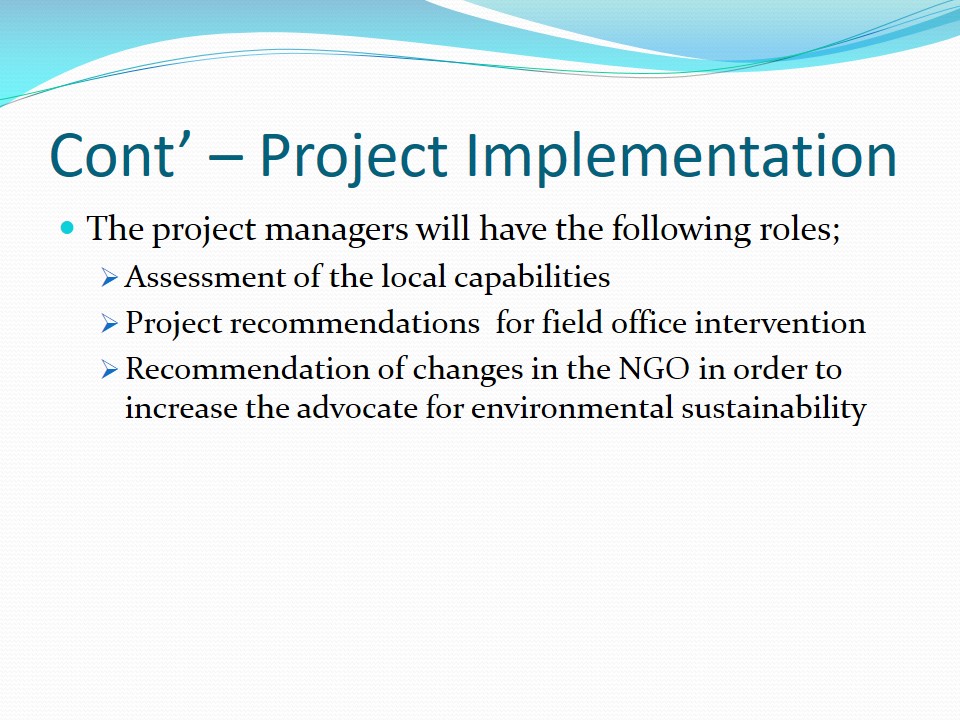
Intended Output
- Just like most projects, a lot of output is expected.
- The output could be apportioned in phases or sectors.
- This is such that, there is the first phase carried out by a certain group and then subsequent phases until the project is driven to completion (DFID, 1990, p.1).
Most of the NGO and the non-NGO funded projects require a high volume of input and in turn the corresponding output will be high. In this case, for the agro forestry project to be efficiently implemented, it could be divided into phases with each phase being carried out by the experts in that area. This way, the community will be better served, thus, the objectives of the projects will in the long-run be attained.
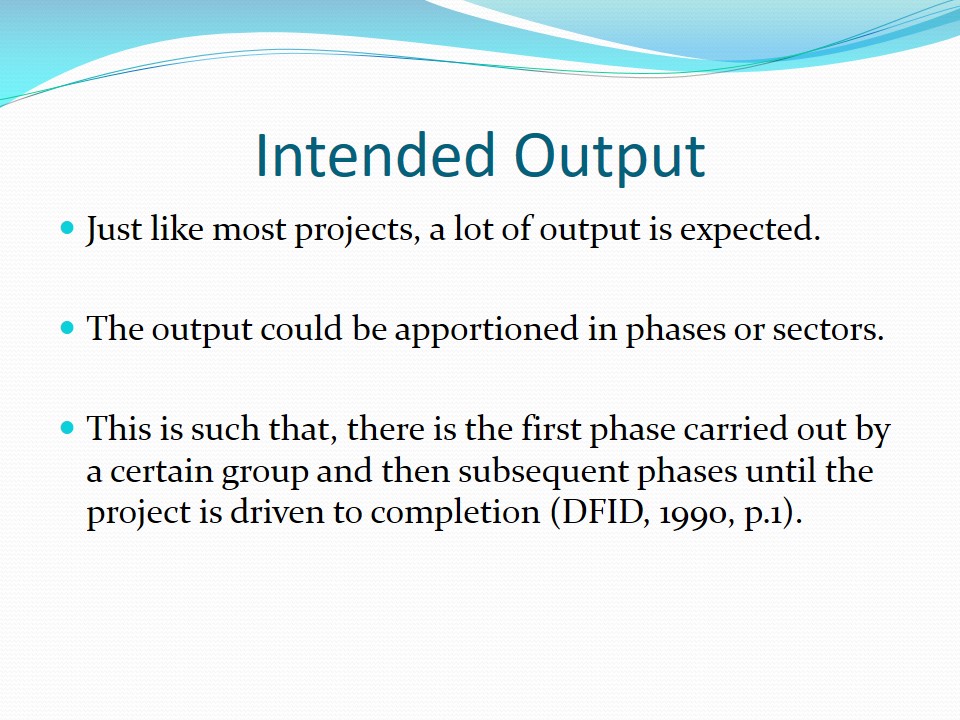
Project’s constraints
- Almost all projects encounter some constraints in the process of implementation or even in the planning stages.
- In this case, the expected hurdles include;
- Inadequate local assessments;
- Project approach limits;
- Institutional restraints (White, 1993, p.3).
No matter how well planned a project may be, there comes a point in time where limitations are experienced which need to be overcome in order to effectively achieve the goals set. As for the case of the agro-forestry project, some of the constraints expected include; insufficient assessment of the area to be implemented, limitations of the project’s approach as well as some institutional constraints (White, 1993, p.3).

How the project overcomes barriers in market systems
- It assists in building on the traditional knowledge on the forest as a resource as well as other management principles(Chuo, 2001, p.8).
- It overcomes global warming since the environment is conserved.
- Desertification is overcame hence an increase in supply of food products thus fair market prices.
The agro forestry project has diversified benefits beginning from an individual to the society and the whole world at large. The first thing is that the project will erase the traditional knowledge that people had. This is by changing to the modern ways of farming from the primitive ones of only subsistence farming. The most important thing is that global warming would be put at bay since factors such as erosion, pollution and desertification will be a thing of the past. This way, productivity will be high hence making the market prices to be fair for every person in the community.
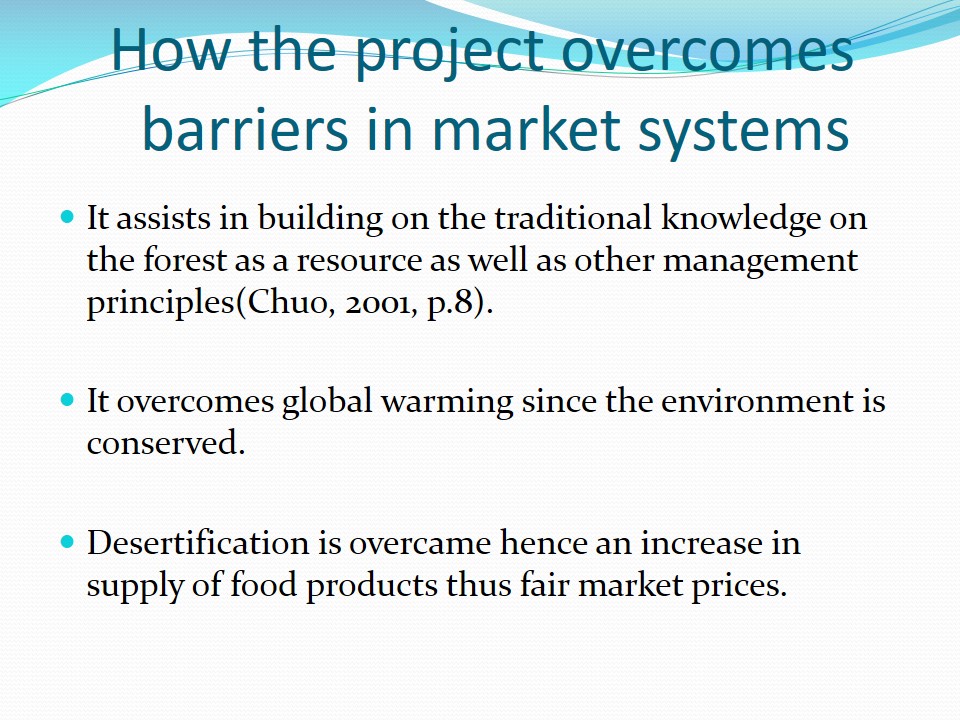
Conclusion
- From the above discussion, it is clear that agro forestry is a project worth implementing if at all environmental sustainability is to be achieved.
- Despite the constraints likely to be encountered, the project managers should ensure that the objectives are fully attained.
Agro forestry is one of the commonly implemented projects because of the many advantages it comes with. In addition to enhancing environmental sustainability, agro forestry plays a great role in overcoming the market barriers by most importantly regulating the market prices of agro products. It can thus be concluded that it is a project worth undertaking regardless of the constraints that may come about.
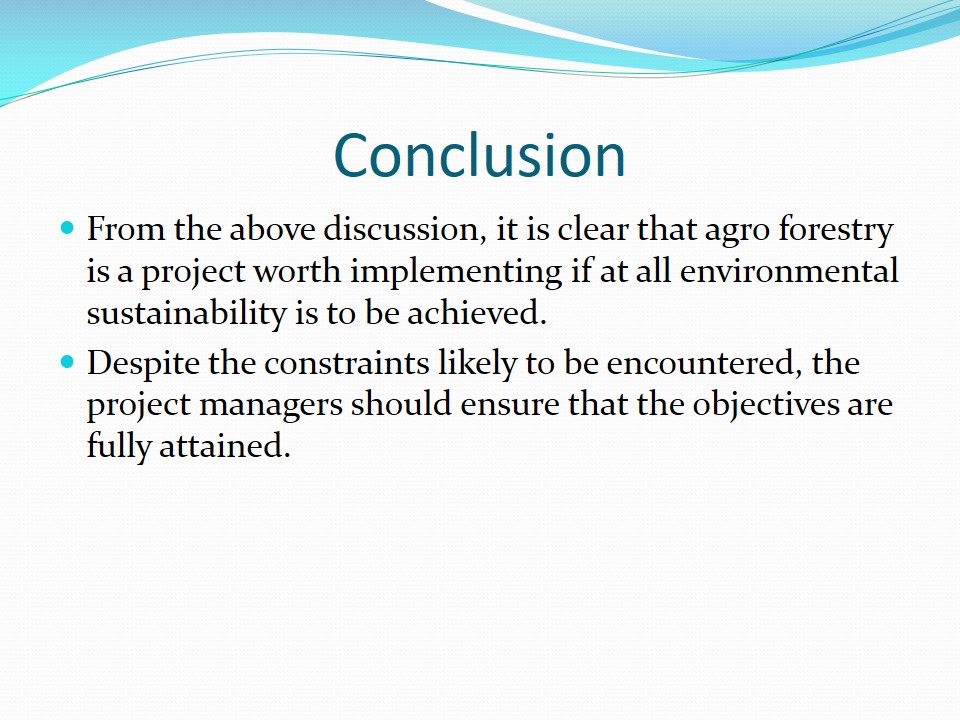
Reference List
Chuo. W. (2010). Community Agro forestry as an Alternative Land use System- A Case Study of Sarawak. Web.
Current, D. et al. (1995). Costs, benefits, and farmer adoption of agro forestry: project experience in Central America and the Caribbean. World Bank Publications. Print.
DFID. (1990). Agro Forestry Project. Web.
White. A. (1993). Integrating sustainability into agro forestry projects: a workshop Framework for NGO program managers. Web.